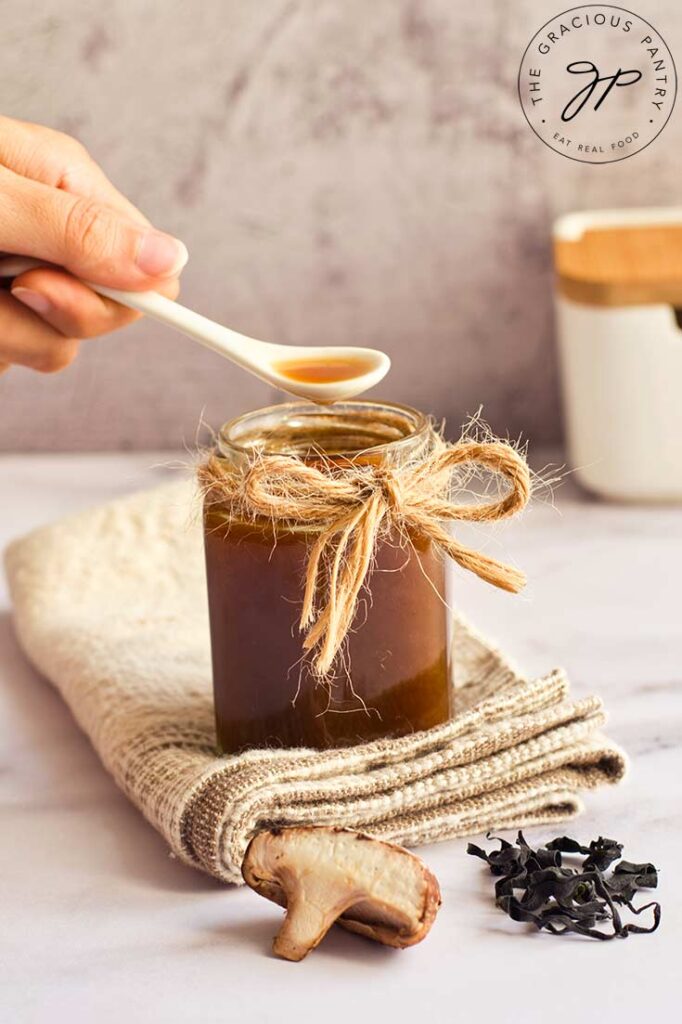What Is Umami? Unraveling The Secrets of The Fifth Taste
Welcome, flavor lovers; let’s go on a gastronomic journey. You might know the four basic food taste profiles: sweet, sour, bitter, and salty. But did you know there’s a fifth flavor that adds depth and savoriness to your dishes? This fifth basic taste palette is called “umami.”

Even though common in our favorite foods, the term is often misunderstood. Umami has roots in Japanese cooking, culture, and cuisine and has gradually crossed the global culinary scene, turning ordinary meals into unique gastronomic experiences.
In this post, we will share the secrets of umami. We will cover its history, science, and impact on the food we eat and its influence on how we perceive flavors. You’re in the right place if you’re eager to learn a new culinary trick or just curious!
Prepare to learn what umami is – the mysterious fifth taste!
Brief History of Umami
The journey of umami started over a century ago in Japan. The term ‘umami’ was coined by Japanese Scientist and Professor Kikunae Ikeda from the Tokyo Imperial University in 1908. Ikeda was struck by its distinctive taste while enjoying a kombu dashi or seaweed soup bowl. This taste was unlike the four primary flavors he was familiar with sweet, salty, sour, and bitter. He was intrigued by this savory, complex taste and decided to delve into its source.
After extensive research, Ikeda identified glutamate, a type of amino acid (a building block for protein), as the compound responsible for this unique taste. The word “umami” itself comes from Japanese, where “umai” means delicious, and “mi” means taste. Umami is often described as pleasant, savory, or ‘meaty’ and is found in various foods such as tomatoes, aged cheeses, and meats.
Ikeda’s discovery marked a significant milestone in the field of food science. It is groundbreaking because it added a fifth taste to the previously accepted four primary flavors.
What Does Umami Taste Like
Umami is a savory, brothy, or ‘meaty’ sensation that can be difficult to tell yet instantly recognizable once experienced. Unlike the other basic tastes, umami brings a unique depth and richness to foods, leaving a lasting, coating sensation on the tongue. The taste keeps you craving more and makes your food deeply satisfying and flavorful.
Foods rich in umami can often taste more ‘complete’ and enjoyable, making umami a crucial tool for creating delicious and balanced dishes.
The Science of Umami
Umami is detected by the taste receptors on our tongue, which respond to specific compounds in our food. The primary compounds that trigger the umami taste are glutamates, naturally occurring amino acids in many foods. Alongside these are two other nucleotides, inosinates and guanylates, that intensify the umami flavor.
When these compounds hit our taste receptors, they signal to our brain, translating into the savory, deep flavor we perceive as umami. It enhances and complements the other flavors in food, enriching our overall culinary experience.
Where Can I Find Umami Foods?
Umami is found naturally in many ingredients, such as soy sauce, miso paste, Parmesan cheese, shiitake mushrooms, tomatoes, seaweed (kelp and kombu), anchovies, cured meats, and fermented products like soybean paste (for example, Gojuchang) and fish sauce.
Even though “umami” is associated with Japanese cuisine, other cuisines worldwide have this flavor profile. Many you have tasted before but did not know. For example, green tea is a popular umami flavor.
In traditional Japanese cuisine, umami-rich foods include soy sauce, miso, and dashi, a broth made from kombu seaweed (kelp) and bonito flakes.
Western cuisines also employ umami-rich ingredients such as ripe tomatoes, Parmesan cheese, and mushrooms. Certain meats like beef, chicken, and seafood, including anchovies and shellfish, are also loaded with umami. Even fermented foods like kimchi, sauerkraut, pickles, and capers can have a strong umami flavor. The magic of umami is its versatility – it can enhance the flavor of almost any dish it graces.
One of my absolute favorite pizzas is a margarita with anchovies on top. The gorgeous smoothness of the tomato sauces with the saltiness from the anchovies, I can eat a whole one to myself.
While you may be familiar with traditional umami sources like soy sauce and mushrooms, let us introduce you to the enigmatic allure of black sesame. This tiny, unassuming seed possesses a power that can transform your dishes into culinary masterpieces. Get ready to unlock the secrets of black sesame umami and embark on a taste adventure like no other!
Black sesame is not only a taste sensation but also a visual feast. Sprinkle these ebony gems onto your dishes, and watch them come alive with an elegant touch of intrigue. From vibrant salads to hearty stir-fries, black sesame adds a captivating visual element that elevates your culinary creations.
Common Myths About Umami
Several myths surround umami, the most common being its association with unhealthy MSG or monosodium glutamate derived from the sodium salt of glutamic acid. However, the umami taste originates from naturally occurring glutamates in many wholesome foods.
While MSG, a synthetic form of glutamate, got a bad rap in the past (it was historically thought to cause headaches, stomach aches, and general discomfort), the US Food and Drug Administration declares MSG safe to eat.
It’s crucial to differentiate between MSG and the natural umami flavor. Embracing umami doesn’t mean resorting to artificial additives; it’s about understanding and utilizing various foods rich in natural flavors to enhance your culinary journey.
How To Use Umami in Your Cooking
Cooking with umami in mind can significantly improve the flavor of your dishes. Techniques such as browning meat, caramelizing onions, or roasting vegetables can enhance their umami properties.
Utilizing umami-rich ingredients like soy sauce, tomato paste, or mushrooms can add depth of flavor to your dishes to make Mum proud. Even in vegetarian or vegan cooking, umami can be maximized through ingredients like nutritional yeast, seaweed, and fermented foods.
Remember, umami is a balancing flavor, so experiment with how it interacts with other food tastes to create a balanced and satisfying meal.
Black Sesame Cheesecake
Indulge your senses in a dessert that combines the captivating allure of black sesame with enchanting umami flavors.
Prepare to embark on a culinary adventure as we present this irresistible black sesame cheesecake recipe. This delightful creation combines the nutty, earthy notes of black sesame with the savory depth of umami, resulting in a luxurious and tempting dessert.
Be amazed as each creamy, velvety bite takes you on a journey of taste and texture, leaving you craving more. Let’s dive into umami and black sesame, where flavors intertwine to create a dessert experience.
Ingredients:
For the crust:
- 1 ½ cups crushed graham crackers
- 1/4 cup melted butter
- 2 tablespoons black sesame seeds
For the filling:
- 16 ounces (450g) cream cheese, softened
- 1 cup granulated sugar
- 1 cup sour cream
- 3 tablespoons all-purpose flour
- 3 tablespoons black sesame paste (available at Asian grocery stores)
- 1 teaspoon vanilla extract
- 3 large eggs
For the topping:
- Whipped cream
- Black sesame seeds for garnish
Instructions:
- Preheat your oven to 325°F (160°C).
- Combine the crushed graham crackers, melted butter, and black sesame seeds for the crust in a bowl. Mix until well combined.
- Press the mixture into the bottom of a 9-inch springform pan, evenly covering the surface. Set aside.
- In a large mixing bowl, beat the cream cheese until smooth and creamy. Add the granulated sugar, sour cream, flour, black sesame paste, and vanilla extract. Mix until all ingredients are well incorporated.
- Add the eggs, one at a time, beating well after each addition until the mixture is smooth.
- Pour the cheesecake filling over the prepared crust in the springform pan. Smooth the top with a spatula.
- Place the pan in the oven and bake for about 50-60 minutes until the edges are set and the center is slightly jiggly.
- Turn off the oven and leave the cheesecake inside for another 1 hour to cool gradually.
- Remove the cheesecake from the oven and let it cool to room temperature. Once cooled, refrigerate for at least 4 hours or overnight to set completely.
- Before serving, carefully remove the sides of the springform pan.
- To garnish, pipe whipped cream rosettes on top of the cheesecake and sprinkle black sesame seeds over the whipped cream.
- Slice and serve this luscious Black Sesame Cheesecake to wow your taste buds and impress your guests.
Enjoy the rich, nutty flavors of the black sesame combined with the creamy, velvety texture of the cheesecake. It’s a unique dessert that will leave everyone craving more!
Enjoy Some Umami
Umami, the so-called fifth taste, is a culinary game-changer. From its early discovery in Japan to its global recognition today, umami has proven indispensable in enhancing and balancing our food’s flavors. Understanding and incorporating umami into our dishes can elevate our cooking and dining experiences.
So, the next time you find your dish lacking a particular ‘oomph,’ remember umami – your secret weapon to create mouthwatering, flavorful dishes that will leave everyone asking for more.
This article originally appeared on Wealth of Geeks.

